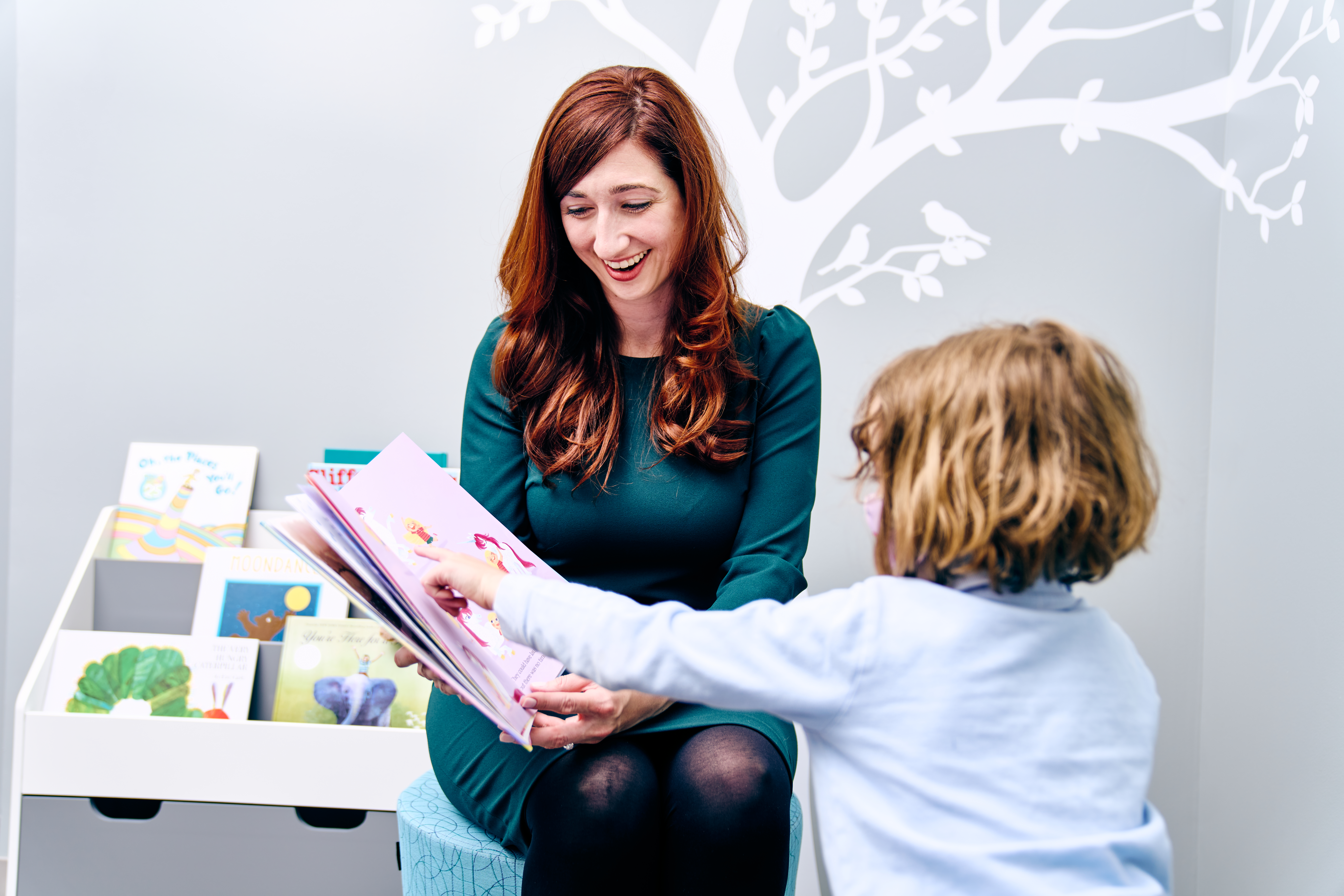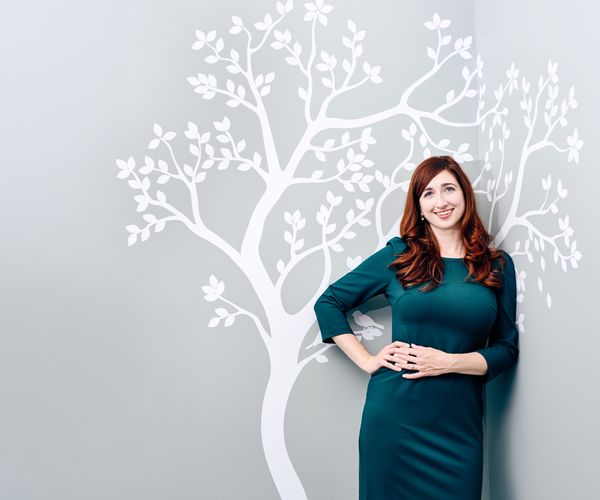For most kids, discovering the delightful oddness of a Shel Silverstein poem or chasing the thrills of Harry Potter can unlock new worlds and spark imaginations. But what if simply decoding the word m-a-g-i-c is an exhausting struggle?
Researchers estimate that between 3 and 12 percent of Americans have dyslexia, a learning disorder that makes it hard to decipher the relationship between sounds, letters, and words. Reading fluently plays a critical role as the gateway to most school learning, and children with dyslexia often feel frustrated and embarrassed by their failure to master what seems to come naturally to their peers. Interventions to treat dyslexia are effective, but unfortunately, most kids don’t get diagnosed until late in elementary school. By then, they’ve internalized years of discouragement and stigma that can have negative impacts on their self-esteem and education. Studies have linked dyslexia with higher rates of anxiety, depression, and behavioral disorders in school-age children.
But what if there was a way to tell sooner which kids were at risk of developing dyslexia? Could we prevent that downward spiral before a child even enters kindergarten?
Speech-language pathologist Jennifer Zuk is certain that we can. Zuk, who joined Sargent’s faculty in 2020 and is launching the new Communication and Neurodevelopment Lab, will focus primarily on determining which factors in early childhood—neurobiological and environmental—shape the acquisition of reading, speech, and language. “There’s increasing evidence that brain development within the first two years of life sets a foundation for one’s long-term outcomes,” Zuk says. “We know that there’s an effective window for early intervention, and yet schools tend to wait until children show repeated, significant difficulty with learning to read before identifying an issue and providing an intervention plan. It’s heartbreaking. How can we optimize the sensitivity and specificity of early screening so that schools can allocate limited resources in the best way possible?”
A Personal Project
Zuk’s passion for her work is deeply personal. Growing up, she watched her younger sister struggle through school. “She would spend hours upon hours on her homework,” Zuk recalls. “Teachers misperceived her as ‘lazy’ and ‘unmotivated’”—descriptions that didn’t match up with the bright, engaged child her family knew at home. It wasn’t until her sister’s junior year in high school that she was finally identified as having attention deficit/hyperactivity disorder (ADHD).

“I witnessed her struggle for years and be inadequately served by mainstream systems,” Zuk says. “When children’s necessary level of support is not properly identified, they can spend years in an academic environment with no clear means for them to succeed.”
Her sister’s late diagnosis led to years of unnecessary struggle and strained her self-confidence in school. It wasn’t until she was seen by a neuropsychologist and received an appropriate identification and treatment plan that she was able to turn things around. After much hard work, she went on to graduate from college and recently earned her master’s degree from Northeastern University. She now works as an academic advisor for undergraduate students.
“It has been remarkable to see how the right path can make all the difference,” Zuk says. “That’s definitely been my driving force.”
Given the complexity of human brains, Zuk says she takes a multidimensional view of developmental disorders. She believes a confluence of cognitive-linguistic, environmental, and neural factors interact to either increase a person’s risk of developing a disability or combine to offer some protective benefit. If we can gain a sharper understanding of how these factors work together—and identify kids who are at risk earlier—Zuk is hopeful that we can shift away from a reactive stance of treating deficits and move toward the development of proactive strategies that can build children’s skills and capacity to succeed.
“As we think about individualized instruction and treatment plans, there’s a wonderful opportunity to not only target areas of weakness but also foster, promote, and build up areas of strength that could help children succeed over time.” — Jennifer Zuk
In 2020, Zuk, then at Boston Children’s Hospital, with colleagues from Harvard and Massachusetts Institute of Technology, published the findings of a three-year study that explored whether certain factors could be used to predict which students would go on to develop dyslexia before they began formal reading instruction. The study included a subset of 74 kindergarteners from 20 schools across New England who were followed through the second grade. Participants were screened on a variety of preliteracy measures, such as phonological awareness and letter identification, to determine their risk status. Researchers also conducted magnetic resonance imaging (MRI) of their brains to look for structural differences that could be potential biomarkers for dyslexia.
The findings confirmed their belief that a multidimensional approach could help identify students who may develop dyslexia from a very young age—well before they get disillusioned and begin to fall behind. Among kids who were identified as being at-risk for dyslexia, those who had more clearly articulated speech at the start of kindergarten turned out to have stronger reading outcomes at the end of second grade. Students from households with higher socioeconomic status also fared significantly better, suggesting a child’s home environment and access to resources confer meaningful learning advantages. Finally, through close examination of the neuroimaging, Zuk and her colleagues discovered a specialized network within the brain—“an alternate neural pathway”—that was identifiable in the brain scans of at-risk kindergartners who later became skilled readers.
What’s exciting is that all of these factors are clearly discernible before most kids start learning to read, Zuk says. “As we think about individualized instruction and treatment plans, there’s a wonderful opportunity to not only target areas of weakness but also foster, promote, and build up areas of strength that could help children succeed over time.”
Literacy at Home
Zuk, who holds a master’s in education and a doctorate in speech pathology, says designing studies that can make a difference for kids means keeping a pulse on what’s happening in classrooms. During her time at Harvard, she formed a partnership with the Southport School in Connecticut, which primarily serves students with dyslexia and ADHD. “They’ve helped me stay grounded with what’s really going on with the kids,” she says.
As her lab prepares to launch its first studies in the next few months, Zuk is focused on how students with dyslexia are faring in light of the pandemic and the past year’s radical schooling changes. “COVID has put a dramatic set of restrictions on what a young child can be exposed to, so the home literacy environment is more important than ever,” she says. With classrooms and libraries closed, something as simple as a parent reading to their child may be the primary way that child gets introduced to new concepts and words.
For children with dyslexia, such experiences may carry even more weight. However, because dyslexia is heritable, a child who has the disorder is more likely to have a parent who has it, too. Previous research has documented the reluctance of parents with dyslexia to read with their children—an understandable disinclination that can perpetuate the cycle of struggle.
In May, in collaboration with the Southport School, Zuk and Kelsey Davison (’25) launched an online parent survey to assess how their personal experiences with reading shape home literacy environments and parent-child reading practices in early childhood. Do adults who struggled to read become parents who feel less confident supporting their child’s literacy development at home? “It really gets at the dilemma of how difficult it can be to disentangle genetic susceptibility from environmental contributions,” Zuk says.
Zuk’s peers are already taking note of her work: she is the 2021 recipient of the Early Career Contributions in Research Award from the American Speech-Language-Hearing Association.
Ultimately, Zuk hopes to contribute to a body of scientific research that celebrates individual differences in the experiences of people like her sister rather than stigmatizing them. As researchers further specify early risk factors and markers of dyslexia—making early diagnosis more common—Zuk believes it will open up new avenues for early childhood interventions and instructional approaches that could proactively set kids up for success so that they never fall behind. “There’s one view that disability is a problem to be fixed,” she says. “But there’s another perspective that sees a person with diverse attributes and strengths that shape who they are and what they can do and works to empower them.”
